Key Takeaways
1. Disruptive Change Requires Dual Transformation
The hastening pace of disruptive change means leaders have precious little time to respond.
The Innovator's Clock Accelerates. In today's business environment, disruptive forces are not only more frequent but also unfold at an unprecedented pace. Companies like Kodak, newspapers, Nokia, and RIM experienced drastically different timelines, with the latter two facing near-instant disruption compared to Kodak's drawn-out decline.
Dual Transformation Defined. To navigate this landscape, leaders must embrace dual transformation, simultaneously repositioning their traditional core business (Transformation A) while building a separate and focused team to pursue new growth opportunities (Transformation B). This approach acknowledges that change is not a monolithic process but requires parallel efforts.
The A+B+C=Δ Equation. The dual transformation equation, A + B + C = Δ, encapsulates this approach. Transformation A focuses on repositioning the core, Transformation B creates a new growth engine, and the Capabilities Link (C) leverages difficult-to-replicate assets to gain an unfair advantage. This formula provides a framework for achieving significant change (Δ) in the face of disruption.
2. Transformation A: Repositioning the Core for Resilience
The essence of transformation A is changing the how—finding more effective and efficient ways to address customer needs to maximize the resilience and relevance of your historical core business.
Defensive Maneuvers. Transformation A is about making the core business more resilient in the face of disruption. It involves re-evaluating the customer's job to be done and innovating the business model to deliver against that job more effectively. Examples include Deseret Media's shift to faith and family content, Adobe's move to subscription-based software, and Netflix's transition from DVDs to streaming.
Four Keys to Transformation A. To succeed with Transformation A, leaders must:
- Determine the defensible post-disruption job to be done
- Innovate the business model to deliver against the job
- Determine and monitor new metrics that reflect the new model
- Implement aggressively
Beyond Cost-Cutting. While cost reduction is often a component of Transformation A, the goal is not simply to cut costs but to reposition the business model to increase long-term competitiveness. This requires a fundamental rethinking of operations and a willingness to make bold moves.
3. Transformation B: Creating a New Growth Engine
Disruption opens windows of opportunity to create massive new markets.
Seizing the Innovator's Opportunity. Transformation B is about identifying and capitalizing on new growth opportunities created by disruptive forces. It involves finding new ways to solve different problems, often by breaking constraints that historically bottled up markets. Examples include SingPost's shift to logistics services, Amazon's creation of Amazon Web Services, and universities' expansion into online education.
Three Keys to Transformation B. To successfully drive Transformation B, leaders must:
- Identify constrained markets
- Iteratively develop the business model to serve those markets
- Use partnerships, acquisitions, and new hires to succeed against a new competitive set
Beyond the Core. Transformation B requires a different mindset and skillset than Transformation A. It involves venturing into new markets, competing against new players, and embracing a more iterative, test-and-learn approach.
4. The Capabilities Link: Bridging Core and New Growth
The capabilities link flips the dilemma.
Flipping the Innovator's Dilemma. The Capabilities Link (C) is the bridge between Transformation A and Transformation B. It involves strategically leveraging existing capabilities to gain an unfair advantage in new markets, while avoiding the constraints that can stifle innovation. This requires striking a careful balance between leveraging core assets and allowing the new growth engine to operate independently.
Three Keys to the Capabilities Link. To successfully create a Capabilities Link, leaders must:
- Carefully select critical capabilities
- Strategically manage the interface between the core and the new
- Actively arbitrate when disputes arise
Strategic Selection. The key is to identify capabilities that will truly give the new growth engine an unfair advantage, rather than simply borrowing capabilities because they are readily available. This requires a deep understanding of the new market and the competitive landscape.
5. Courage to Choose Before the Burning Platform
Paradoxically, the more obvious the need to transform, the harder it is to do it.
The Burning Platform Fallacy. Waiting until a crisis hits before initiating transformation is a recipe for disaster. By then, options are limited, and the organization is often paralyzed by fear and uncertainty. Leaders must have the courage to choose to transform before the need is obvious.
Early Warning Signs. To identify the need for transformation, leaders must be vigilant in monitoring early warning signs of disruptive change, such as:
- Decreases in customer loyalty
- Significant venture capital investment in emerging technologies
- Policy changes that open the door to new entrants
- Emergence of disruptors at the low end or market fringes
- Shifts in customer habits and preferences
- Development of viable disruptive business models
- Slowing revenue growth coupled with increased profit margins
Proactive Leadership. The key is to be proactive rather than reactive, anticipating future challenges and opportunities before they become mainstream. This requires a willingness to challenge conventional wisdom and embrace uncertainty.
6. Clarity to Focus on a Select Few Moonshots
Innovation is saying ‘no’ to 1,000 things.
Strategic Clarity. Dual transformation requires a laser focus on a select few high-potential opportunities. Leaders must resist the temptation to pursue too many initiatives, as this can dilute resources and create confusion. The goal is to identify a handful of "moonshots" that have the potential to transform the organization.
Three Steps to Strategic Clarity. To achieve strategic clarity, leaders must:
- Determine their growth gap
- Determine the goals and boundaries of their new growth efforts
- Identify strategic opportunity areas
Future-Back Thinking. This process requires a "future-back" mindset, starting with a clear vision of the desired future state and then working backward to identify the steps needed to achieve it. This approach helps to prioritize efforts and avoid getting bogged down in incremental improvements.
7. Cultivate the Curiosity to Explore New Frontiers
Even though focus is important, leaders must recognize that the specific strategy that will power transformation B will come out of a process of trial and error, with many efforts failing along the way.
Balancing Predictability and Curiosity. While predictability is essential for managing the core business, curiosity is crucial for exploring new growth opportunities. Leaders must create an environment that encourages experimentation, learning, and a willingness to challenge assumptions.
Three Ways to Infuse Curiosity:
- Create safe spaces for innovation
- Expose leaders to new thinking
- Reinforce curiosity in routines and rituals
Embracing Failure. A key aspect of cultivating curiosity is embracing failure as a learning opportunity. Leaders must create a culture where it is safe to experiment and where mistakes are seen as valuable sources of insight.
8. The Conviction to Persevere Through Predictable Crises
There will be dark days—times when a board member doubts, when shareholders question, when even committed executives waver.
The Inevitability of Crises. The dual transformation journey is fraught with challenges and setbacks. Leaders must be prepared to face crises of commitment, conflict, and identity. These crises are predictable, but their timing and intensity are not.
Two Keys to Perseverance. To navigate these crises, leaders must:
- Repeat the mantra, "A does A, B does B," to maintain focus and avoid distractions
- Ground their efforts in a motivating purpose that unites the organization
The Power of Purpose. A clear and compelling purpose provides a guiding light during difficult times. It helps to align the organization, clarify priorities, and inspire employees to persevere through challenges.
Last updated:
FAQ
1. What is [Dual Transformation] by Scott D. Anthony about?
- Core premise: The book explains how established companies can simultaneously reposition their current core business (Transformation A) while creating new growth engines (Transformation B) to survive and thrive amid disruptive change.
- Dual transformation equation: It introduces the formula A + B + C = Δ, where A is repositioning the core, B is creating the new, and C is the capabilities link connecting the two.
- Framework and tools: The book provides a detailed, actionable framework, real-world case studies, and practical tools to help leaders manage both transformations in parallel.
2. Why should I read [Dual Transformation] by Scott D. Anthony?
- Addressing disruption: The book tackles the greatest challenge facing leaders today—how to respond effectively to rapid, disruptive change without losing the core business.
- Actionable guidance: It offers practical advice, frameworks, and checklists for defining strategy, managing capabilities, and leading cultural change.
- Leadership insights: Through real-world stories and leadership reflections, it balances optimism with realism, preparing readers for the challenges of transformation.
3. What are the key takeaways from [Dual Transformation] by Scott D. Anthony?
- Dual transformation is essential: Companies must reposition their core business and create new growth engines simultaneously to survive disruption.
- Capabilities link is critical: Selectively sharing assets and know-how between the core and new businesses enables synergy without stifling innovation.
- Leadership mindsets matter: Courage, clarity, curiosity, and conviction are required to navigate the predictable crises of transformation.
- Practical tools provided: The book offers assessments, strategy guides, and planning maps to help leaders implement dual transformation.
4. What is Transformation A in [Dual Transformation] and why is it important?
- Definition: Transformation A is about repositioning today’s core business to maximize its resilience by changing how value is created, delivered, and captured.
- Same job, new how: It focuses on solving the same fundamental customer problem (the “job to be done”) but with a different business model or approach.
- Examples: Adobe’s shift to subscription-based Creative Cloud and Netflix’s move from DVD rentals to streaming are classic Transformation A cases.
- Importance: This transformation defends and optimizes the core business in the face of disruption.
5. What is Transformation B in [Dual Transformation] and how does it drive growth?
- Definition: Transformation B involves creating a separate new growth engine that solves a different but related problem, often targeting new or historically constrained markets.
- Iterative development: It requires experimentation, business model innovation, and sometimes acquisitions or external hires to build new capabilities.
- Examples: Amazon Web Services (AWS) and SingPost’s expansion into e-commerce logistics illustrate successful Transformation B efforts.
- Growth driver: Transformation B is essential for long-term growth and future-proofing the organization.
6. What is the Capabilities Link (C) in [Dual Transformation] and how should it be managed?
- Connecting A and B: The capabilities link is the selective sharing of assets, resources, and know-how between the core business (A) and the new growth business (B).
- Balance is critical: Leaders must carefully choose which capabilities to share to gain advantage without letting the core’s inertia stifle innovation.
- Management practices: Formal exchange teams, transfer pricing, and active conflict arbitration are recommended to manage the interface strategically.
- Strategic advantage: A well-managed capabilities link enables both businesses to leverage strengths while remaining agile.
7. How does [Dual Transformation] by Scott D. Anthony recommend identifying when to start a dual transformation?
- Early warning signs: The book identifies seven early signals of disruptive change, such as declining customer loyalty, new business models, and increased venture capital investment.
- Proactive action: Leaders are encouraged to start transformation before a crisis hits, as waiting too long reduces the chances of success.
- Courage to choose: Making bold decisions early is emphasized as a key leadership trait for successful transformation.
- Case examples: The book contrasts proactive companies like Netflix with late responders like Nokia.
8. How does [Dual Transformation] by Scott D. Anthony suggest leaders identify and focus on strategic opportunity areas?
- Three-step process: Identify the growth gap, set growth goals and boundaries, and align on a shortlist of strategic opportunity areas.
- Four key questions: Evaluate each opportunity for compelling problems, market size, believable solutions, and fit with capabilities and trends.
- Dedicated teams: A focused team can develop high-potential areas quickly through market research and brainstorming.
- Case study: Manila Water’s approach is highlighted as an example of effective opportunity identification.
9. What is the “future-back” approach in [Dual Transformation] and why is it important?
- Definition: The future-back mindset involves envisioning a desired future state 3-5 years ahead and working backward to determine necessary actions.
- Qualitative and quantitative: Leaders use both rough quantitative estimates and qualitative narratives to describe the future company.
- Dialogue-based planning: Ongoing leadership dialogues help build shared understanding and align on strategic initiatives.
- Importance: This approach ensures that transformation efforts are guided by a clear, ambitious vision rather than incremental improvements.
10. What are the key leadership mindsets and behaviors for successful dual transformation in [Dual Transformation]?
- Courage to choose: Leaders must make bold decisions and start transformation before a crisis.
- Clarity to focus: Concentrate resources on a few high-potential “moonshots” and avoid distractions.
- Curiosity to explore: Embrace experimentation, learn from failures, and foster a culture of innovation.
- Conviction to persevere: Stay committed through inevitable crises of identity, conflict, and commitment.
11. What are the main cultural and organizational challenges addressed in [Dual Transformation] by Scott D. Anthony?
- Curiosity quotient: The book provides tools to assess and embed curiosity in corporate routines and leadership behaviors.
- Safe spaces for innovation: Leaders are encouraged to create environments where experimentation and failure are accepted and celebrated.
- Leadership development: Practices like inverse mentoring, learning new skills, and engaging with startups are recommended to foster a culture of exploration.
- Managing crises: The book outlines three predictable crises—commitment, conflict, and identity—that leaders must navigate during transformation.
12. What practical tools and frameworks does [Dual Transformation] by Scott D. Anthony provide for implementing its concepts?
- Leadership discussion questions: To spark strategic conversations about disruption and transformation.
- Future-back strategy guides: To align leadership on vision, goals, and initiatives.
- Transformation maps and assessments: Tools like three-year transformation maps, early warning sign assessments, and growth gap blueprints help plan and monitor progress.
- Capability and curiosity toolkits: Checklists and frameworks for managing capabilities and embedding curiosity in the organization.
- Actionable resources: These tools are designed to help leaders navigate the complexity of dual transformation with practical, step-by-step guidance.
Review Summary
Dual Transformation receives mostly positive reviews, with readers praising its practical approach to business innovation and transformation. Many appreciate the case studies, particularly Netflix and Deseret News. The book's framework for repositioning core businesses while creating new growth engines resonates with executives. Readers find it accessible and thought-provoking, even for those outside the business field. Some criticize the overlap with other business concepts and the focus on large companies. Overall, readers value the book's insights on navigating disruption and maintaining competitiveness in rapidly changing industries.
Similar Books


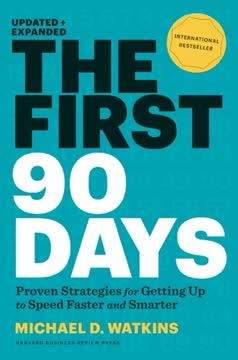
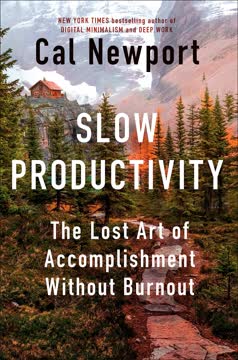
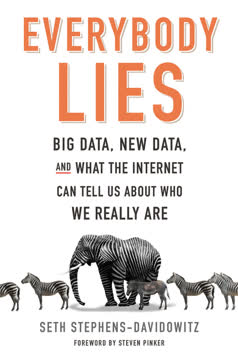
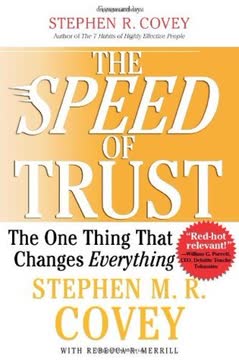


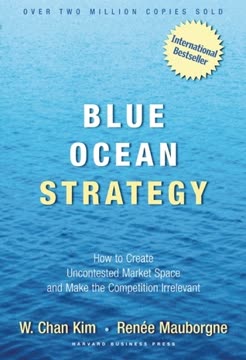

Download PDF
Download EPUB
.epub digital book format is ideal for reading ebooks on phones, tablets, and e-readers.




